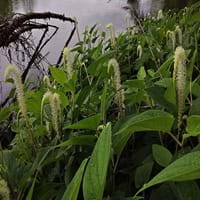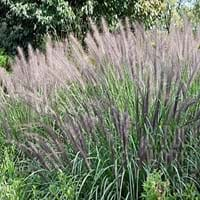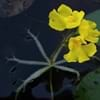Life Span
Perennial
Perennial
Origin
Northeastern United States, Mid-Atlantic United States, Southeastern United States, North-Central United States, Central United States, South-Central United States, Canada
Eastern Asia, Australia
Types
Not Available
Not Available
Habitat
Moist Soils, Terrestrial, Upland, Wet lands
Grassland, open forests, wastelands, Wet lands
USDA Hardiness Zone
3-11
5-9
Sunset Zone
21,22
3a, 3b, 4, 5, 6, 7, 8, 9, 10, 11, 12, 13, 14, 15, 16, 17, 18, 19, 20, 21, 22, 23, 24
Habit
Thicket/Colonizing
Clump-Forming
Flower Color
White
Ivory, Rose, Tan
Flower Color Modifier
Not Available
Bicolor
Fruit Color
Brownish Red
Sandy Brown, Tan
Leaf Color in Spring
Green, Dark Green
Green, Light Green
Leaf Color in Summer
Green, Dark Green
Light Green
Leaf Color in Fall
Green, Dark Green
Green, Light Green, Tan
Leaf Color in Winter
Not Available
Tan, Sandy Brown
Leaf Shape
Heart-shaped
Conduplicate
Plant Season
Spring, Summer, Fall
Spring, Summer, Fall, Winter
Sunlight
Full Sun, Partial Sun, Partial shade
Full Sun, Partial Sun
Type of Soil
Loam
Clay, Loam, Sand
The pH of Soil
Acidic, Neutral
Acidic, Neutral, Alkaline
Soil Drainage
Average
Well drained
Bloom Time
Summer
Summer, Late Summer, Early Fall, Fall, Late Fall
Tolerances
Wet Site
Drought
Where to Plant?
Container, Ground, Pot
Container, Ground, Pot
How to Plant?
From Rhizomes, Root Division
Divison, Seedlings
Plant Maintenance
Medium
Medium
Watering Requirements
Needs Very high moisture
occasional watering once established
In Summer
Lots of watering
Lots of watering
In Spring
Moderate
Moderate
In Winter
Average Water
Average Water
Soil pH
Acidic, Neutral
Acidic, Neutral, Alkaline
Soil Type
Loam
Clay, Loam, Sand
Soil Drainage Capacity
Average
Well drained
Sun Exposure
Full Sun, Partial Sun, Partial shade
Full Sun, Partial Sun
Pruning
Remove damaged leaves, Remove dead branches, Remove dead leaves
Remove damaged leaves, Remove dead branches, Remove dead leaves
Fertilizers
All-Purpose Liquid Fertilizer
All-Purpose Liquid Fertilizer
Pests and Diseases
bees
eyespot, Leaf spot, Rust
Plant Tolerance
Drought
Drought
Flower Petal Number
Single
Single
Foliage Texture
Medium
Fine
Foliage Sheen
Matte
Glossy
Invasive
Sometimes
Sometimes
Attracts
Bees, Flies, Turtles
songbirds
Allergy
allergic reaction, Pollen
Pollen
Aesthetic Uses
Bog Garden, Showy Purposes, Water gardening, Wild gardens
Borders, Ground Cover
Beauty Benefits
Not Available
Not Available
Environmental Uses
Air purification
Air purification
Medicinal Uses
Insect Bites, Treating fever
Not Available
Part of Plant Used
Flowers, Leaves, Root
Seeds
Other Uses
Grown in botanical gardens as a specimen, Used as Ornamental plant
Used like flour
Used As Indoor Plant
Sometimes
No
Used As Outdoor Plant
Yes
Yes
Garden Design
Container, Water Gardens, Wildflower
Dried Flower / Everlasting, Bedding Plant, Container, Cutflower, Feature Plant, Foundation, Groundcover, Mixed Border, Rock Garden / Wall
Botanical Name
SAURURUS cernuus
PENNISETUM alopecuroides
Common Name
Lizard's Tail
Chinese Fountaingrass, Fountaingrass
In Hindi
Saururus cernuus
Fountaingrass
In German
Saururus cernuus
Fountaingrass
In French
Saururus cernuus
Fountaingrass
In Spanish
cernuus Saururus
Fountaingrass
In Greek
Saururus cernuus
Fountaingrass
In Portuguese
Saururus cernuus
Fountaingrass
In Polish
Saururus cernuus
Fountaingrass
In Latin
Saururi cernuus
Fountaingrass
Phylum
Tracheophyta
Magnoliophyta
Class
Magnoliopsida
Liliopsida
Order
Piperales
Cyperales
Family
Saururaceae
Poaceae
Genus
Saururus
Pennisetum
Clade
Angiosperms, Magnoliids
Angiosperms, Commelinids, Monocots
Tribe
Not Available
Paniceae
Subfamily
Not Available
Panicoideae
Number of Species
Not Available
Not Available
Importance of Saururus cernuus and Fountaingrass
Want to have the most appropriate plant for your garden? You might want to know the importance of Saururus cernuus and Fountaingrass. Basically, these two plants vary in many aspects. Compare Saururus cernuus and Fountaingrass as they differ in many characteristics such as their life, care, benefits, facts, etc. Every gardener must at least have the slightest clue about the plants he wants to plant in his garden. Compare their benefits, which differ in many ways like facts and uses. The medicinal use of Saururus cernuus is Insect Bites and Treating fever whereas of Fountaingrass is Not Available. Saururus cernuus has beauty benefits as follows: Not Available while Fountaingrass has beauty benefits as follows: Not Available.
Compare Facts of Saururus cernuus vs Fountaingrass
How to choose the best garden plant for your garden depending upon its facts? Here garden plant comparison will help you to solve this query. Compare the facts of Saururus cernuus vs Fountaingrass and know which one to choose. As garden plants have benefits and other uses, allergy is also a major drawback of plants for some people. Allergic reactions of Saururus cernuus are allergic reaction and Pollen whereas of Fountaingrass have Pollen respectively. Having a fruit bearing plant in your garden can be a plus point of your garden. Saururus cernuus has no showy fruits and Fountaingrass has no showy fruits. Also Saururus cernuus is not flowering and Fountaingrass is not flowering . You can compare Saururus cernuus and Fountaingrass facts and facts of other plants too.





